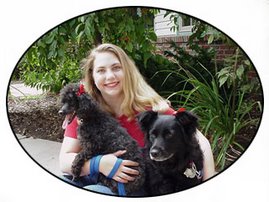Have you ever had a client come to pick up their dog and exclaim "that's not what I wanted?" even though you did exactly what the owner requested? Or perhaps a client who decides they have forgotten your policy on flea control, pricing, dematting or other issues you clearly went over with them before they left your salon? There is an easy and simply solution that can solve these rare, but problematic clients. Grooming release forms.
Every salon has it's own policy about different things so no two release forms will be identical. The important part is having one that is clearly written, understood and signed by your clients every time they drop their pet off for grooming. The release forms I have used in the past have the paracite policy stating if fleas/ticks are found I will treat the animal at the owners expense. I know there are some pet stylists that don't allow pets with fleas in their salons. If this is the case it should be in your release form, as well as the steps you will take should fleas or other parasites be found. Besides the standard practices that I put on my release forms I also include an area to write down the requested grooming of the pet for that day. If I have, for example, "Buffy" the poodle coming in for a grooming and the owner has requested about a half inch on the body, shaved face but natural feet I would notate it on the form as #2 lamb, c/f (For me that means to use a #2 comb, leave the legs a bit fuller, scissor them in and do a clean face. Every groomer seems to have their own unique abbreviations for things) and then I would also write out "1/2 inch body, fuller legs, clean shaven face" so that the owner can understand what they are agreeing to. I also like to include a price estimate after going over the pet and the clip desired with a notation stating that it is indeed an estimate and if the I find the price will differ by more than $10.00 I will contact the owner first before proceeding (unless it falls under the aforementioned parasite policy). This can be a separate sentence with a "yes" or "no" written next to it. If they check yes then you need to call if the price will be more than the estimated price by $10.00. If they check "no" than you would not need to call to ask beforehand. You can also have a separate note below that stating something simple like "In case of severe matting I give the groomer permission to shave as needed". This will save you time if you later find the pet to be in worse condition than previously thought. Nothing is more frustrating than having a dog on your table, finding it needs to be stripped down and not being able to get a hold of the owner.
These release forms I also use as receipts for the clients. You can easily have them printed up as a carbon copy form if you would like to be able to give your clients a copy of what they have signed. That may cost more but if it's within your budget I would advise it.
The other releases that I always like to have on hand are for vet care. If you use client cards there are many that come preprinted with a release stating if anything should happen to the pet you as the groomer have permission to seek veterinary assistance. If your files are contained on a computer I would include the vet release in with the flea policy. Within the vet release I would also include the name of the veterinary hospital you will be using.
There are other release forms I have seen successfully used. If you tend to groom a lot of senior pets or do a lot of matted pets then I would also recommend a separate senior and matted pet release form. Within the body of the senior pet release I would include that all senior pets are groomed as they will allow. If the pet seems not to be tolerating grooming well grooming will cease and that the grooming will consist only of what the pet can handle. Clean and comfortable is the key for those special seniors out there. The matted coat release form should state that a matted or severely knotted coat can cause skin irritations, that nicks are a greater risk, and that the groomer will do what is in the best interest of the pet. The stylist should not be held liable if skin irritations or nicks occur.
The release forms not only protect you and your business they also can help the client to understand exactly what they are asking for. It may take a few more minutes of your time, but the time you spend having the client read and sign your form is well spent versus the time trying to calm an upset client and business lost because of an unhappy one.
Wednesday, April 25, 2007
Subscribe to:
Comments (Atom)

